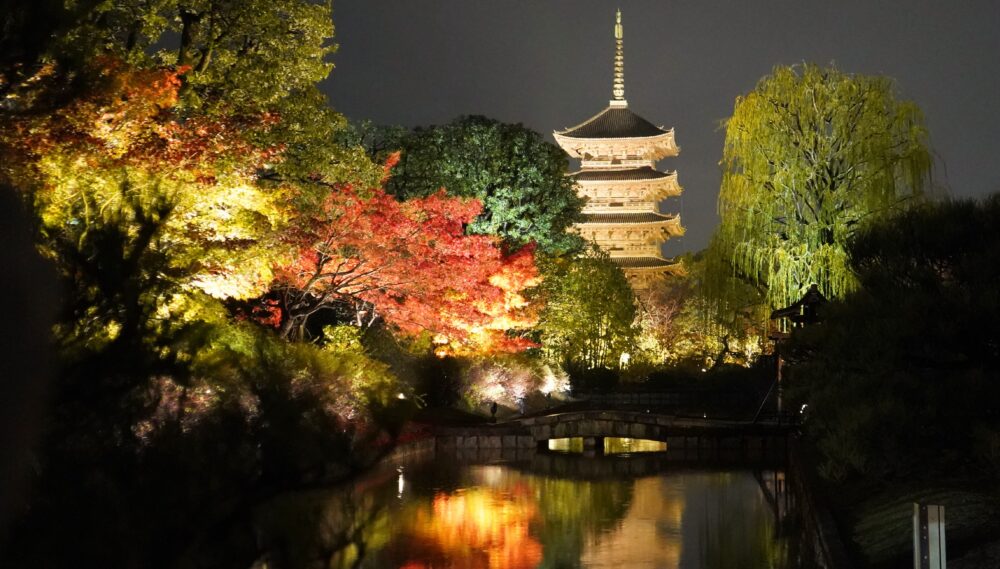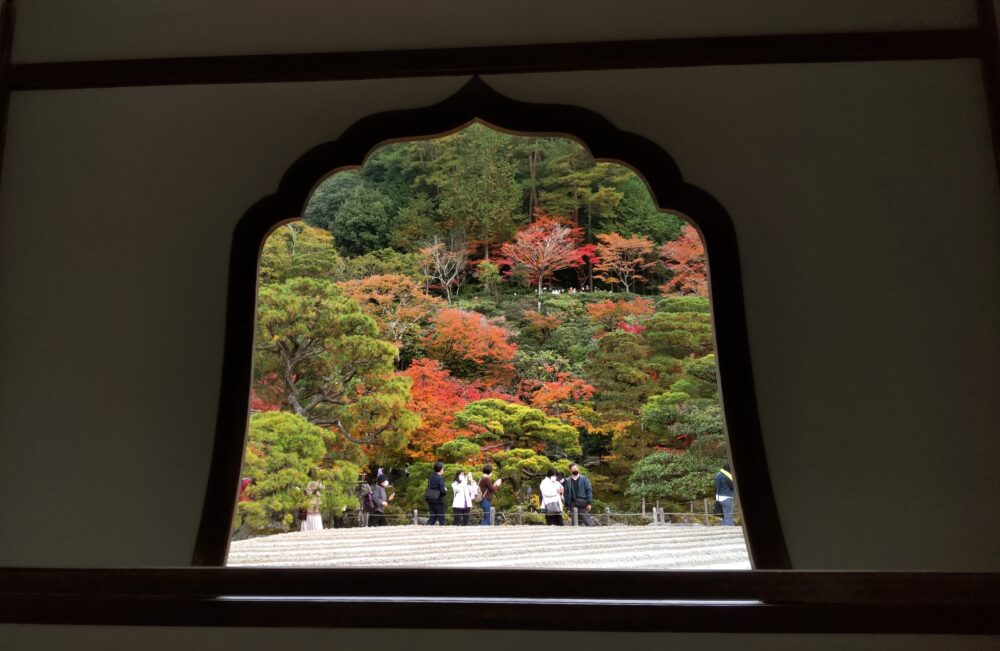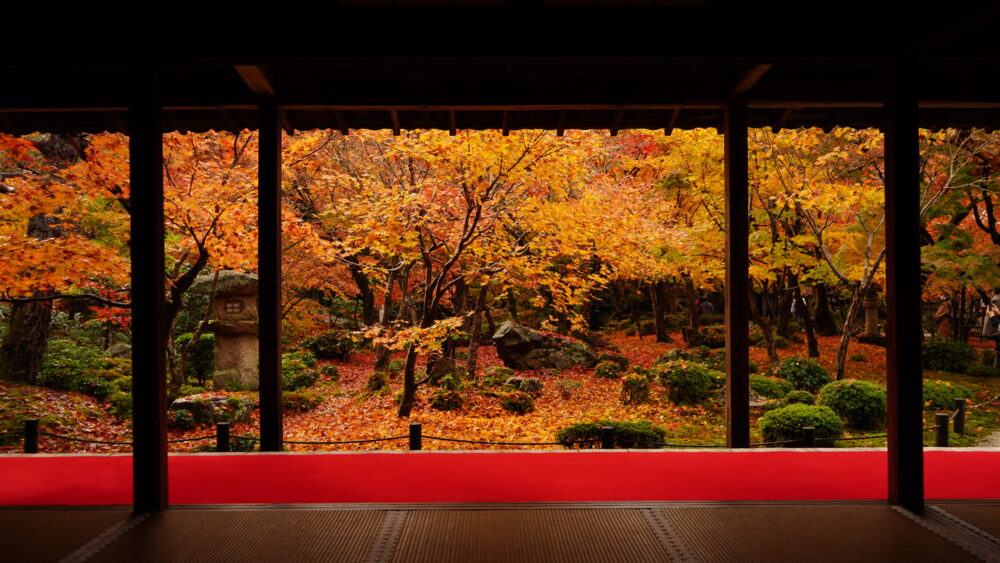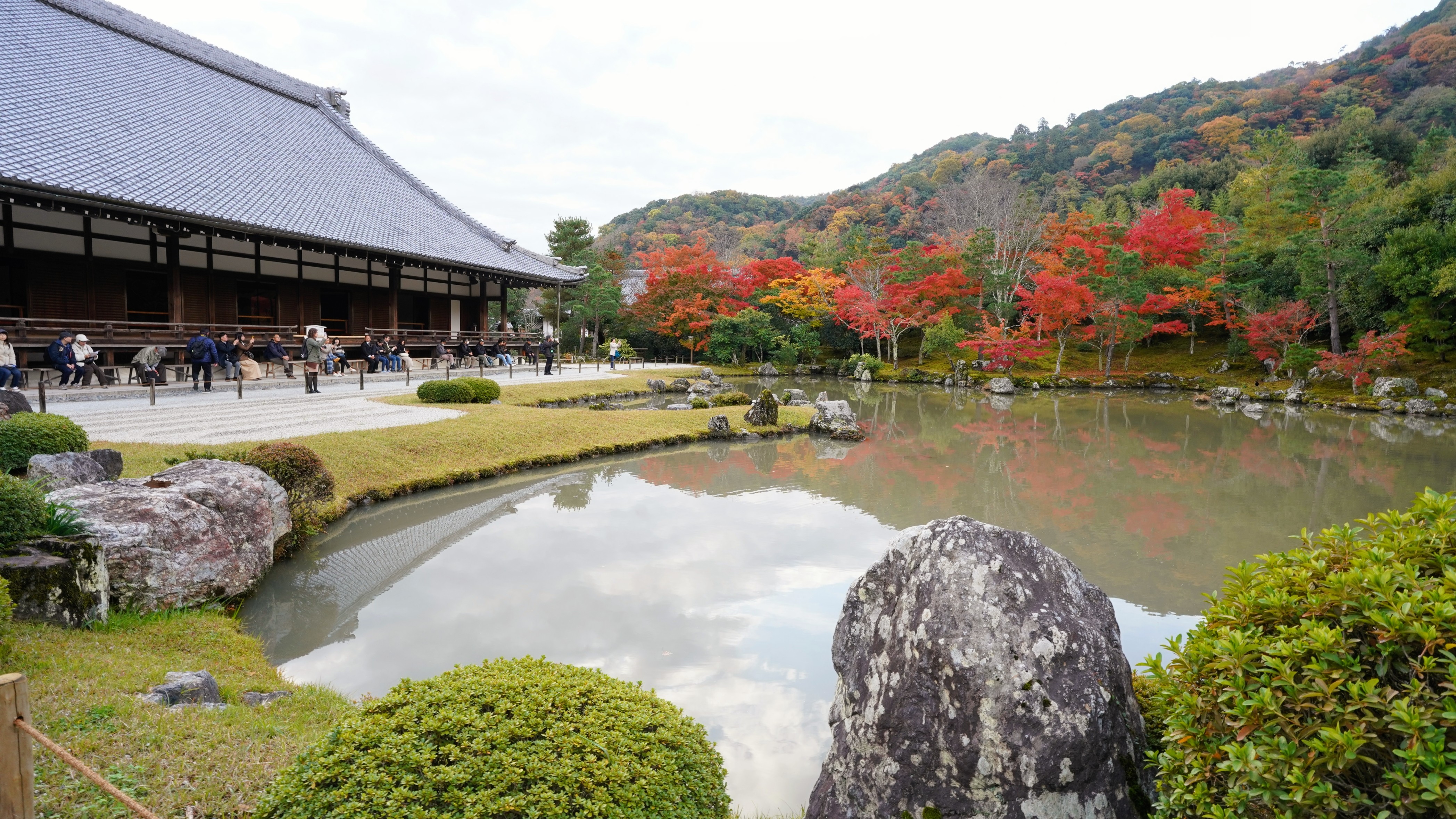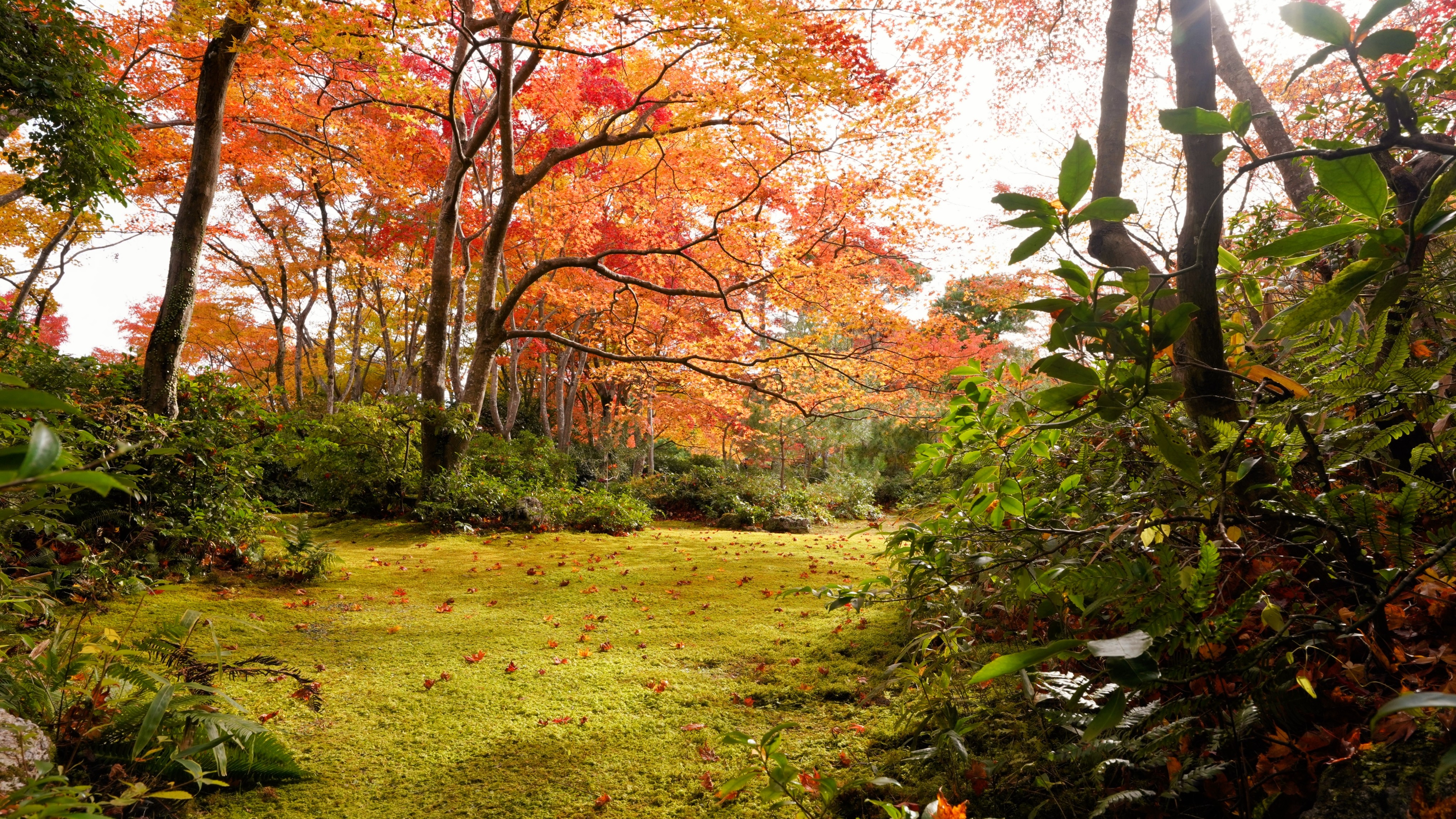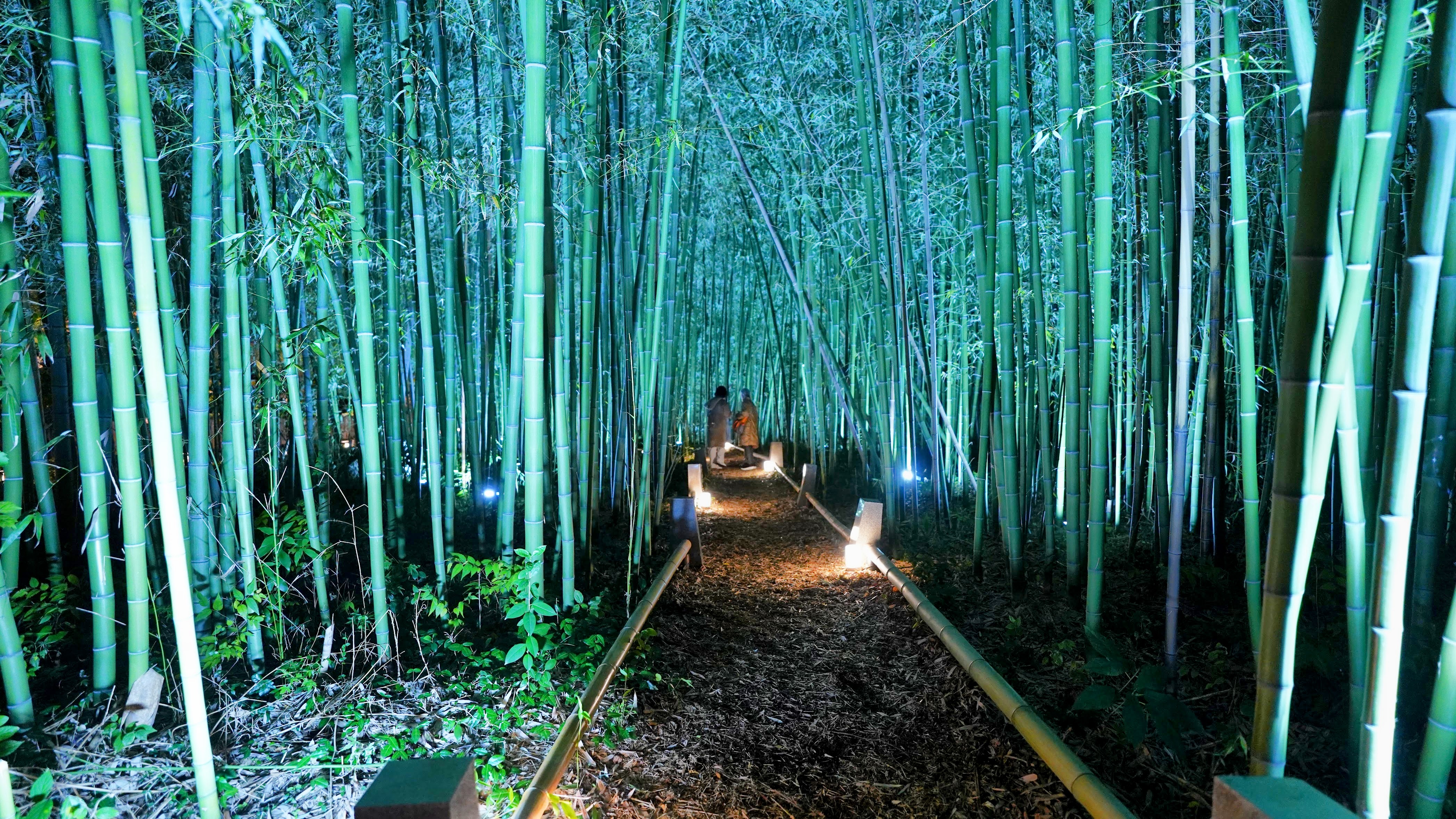Jojakkoji Temple in Arashiyama – All You Need to Know
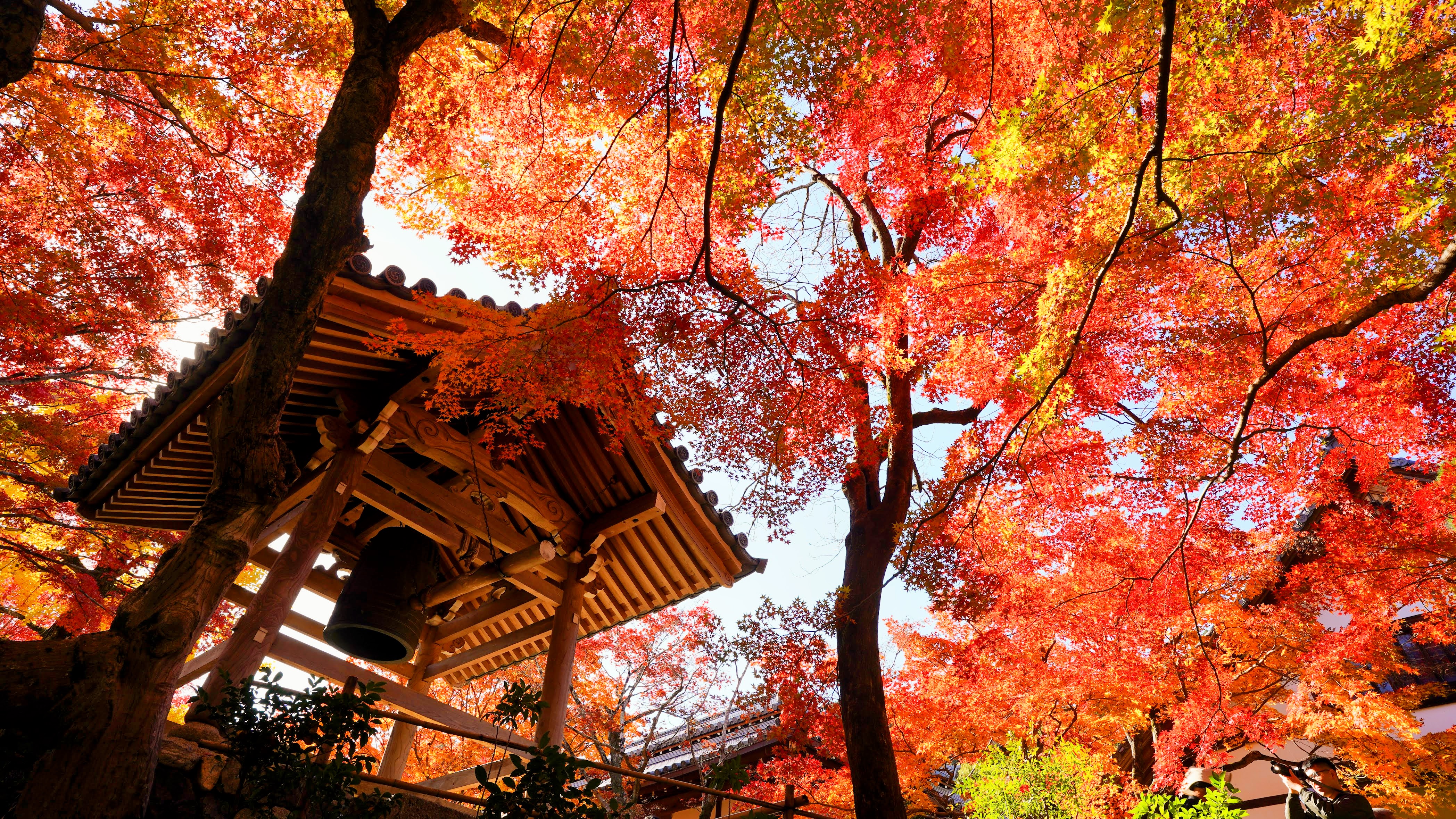
Tucked away in the picturesque Arashiyama district, Jojakkoji is one of Kyoto’s top destinations for autumn. Wander through a breathtaking tunnel of maple leaves, discover historic pagodas surrounded by vibrant colors, and find tranquility amidst the moss-covered grounds of this peaceful “botanical temple.” A truly unforgettable experience awaits in Kyoto.
Autumn foliage spot
Jojakkoji Temple is a renowned autumn foliage spot. In the fall, the temple’s approximately 200 maple trees change color all at once, transforming the approach into a breathtaking “tunnel of autumn leaves.”
Garden Features and Highlights
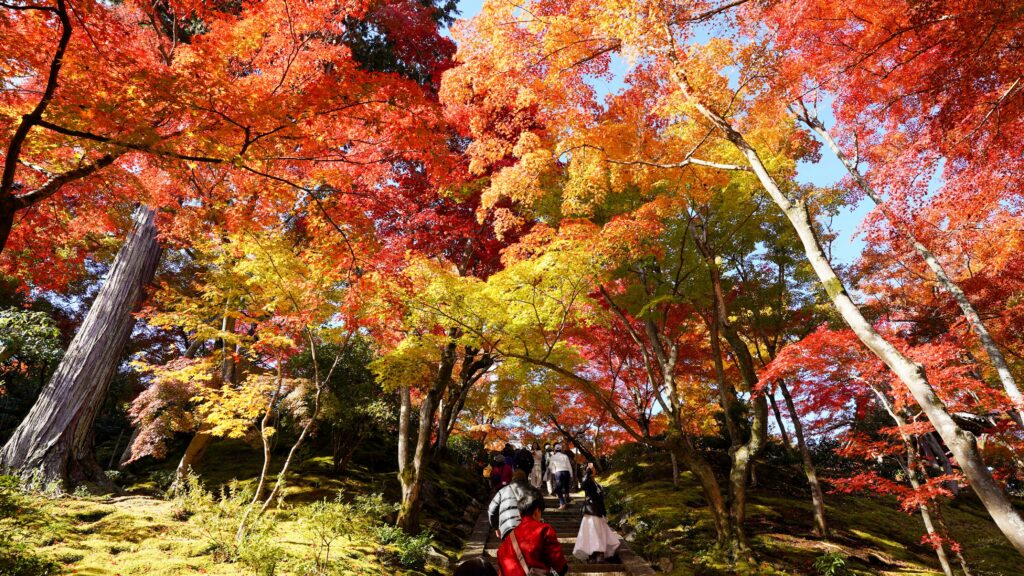
The garden is nicknamed the “Botanical Temple” because the current head priest is an expert in botany and cultivates it. Its most distinctive feature is its skillful management, which creates a natural landscape where the plants appear to grow wild rather than manicured.
While autumn is a highlight, the temple is also exceptional in early summer when the fresh green maples and moss glisten with rain. Located on a mountainside, the temple offers a spectacular panoramic view of Sagano from its highest point.
Interplay of buildings and foliage
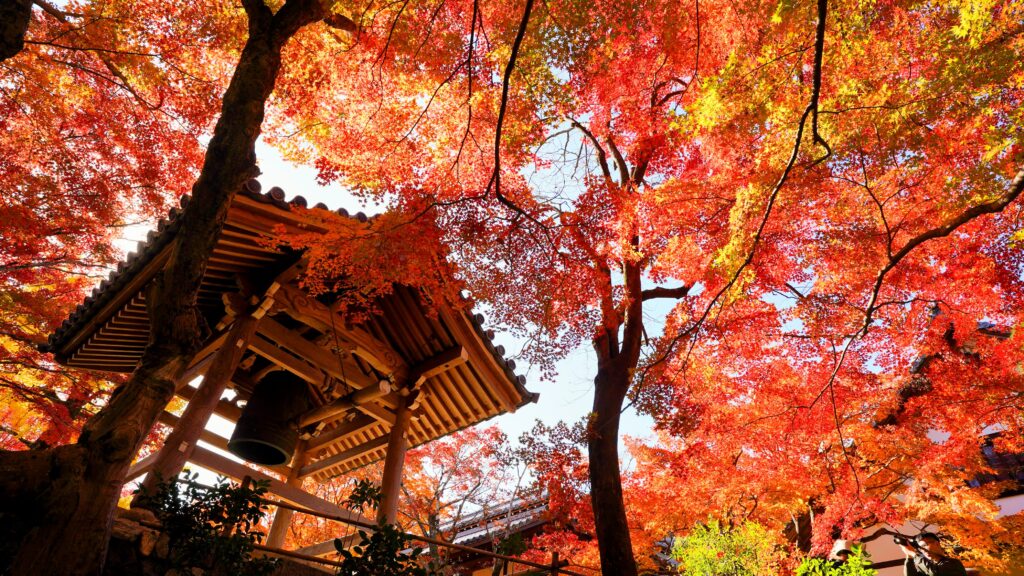
The sight of the temple’s structures, particularly the Tahoto Pagoda (an important cultural property) and the atmospheric bell tower, surrounded by fiery autumn leaves, is as beautiful as a painting. As the season wanes, the fallen red leaves create a stunning contrast against the green moss below. This evokes a sense of wabi-sabi, the Japanese concept of beauty in imperfection and transience, which is unique to Kyoto.
History
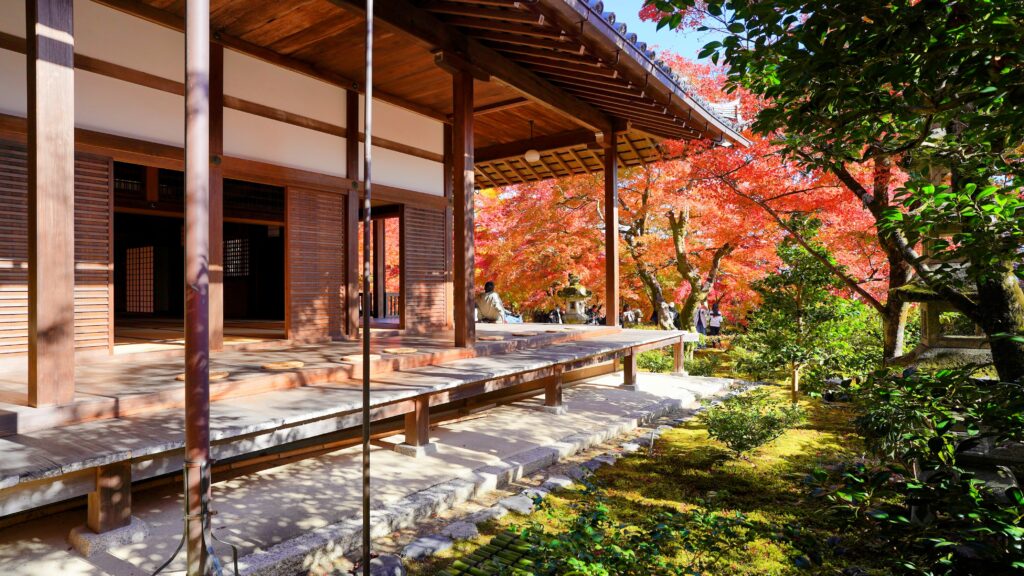
The Jojakkoji Temple is located on Mt. Ogura. It is believed that the “Shigure-tei” villa, which belonged to the Heian-period poet Fujiwara no Teika, was once located there.
Founded in 1596 by the Nichiren priest Nisshin, the temple was established as a hermitage after Nisshin defied the powerful ruler Toyotomi Hideyoshi. The land was donated by the wealthy merchant Suminokura Ryoi.
Key structures were added with the support of patrons. The Main Hall was relocated from Fushimi Momoyama Castle. In 1616, the Nio-mon Gate, which was originally built between 1345 and 1349, was moved from the Honkokuji Temple. This makes it the oldest building on the grounds. The beautiful Tahoto Pagoda, now an important cultural property, was erected in 1620.
The original temple bell was lost during World War II, but a new one was cast in 1973. Today, the temple is also known as a “botanical temple” and is famed for its naturalistic gardens, which were cultivated by a head priest who was an expert in botany.
Buildings
The grounds of Jojakkoji Temple feature various buildings, including some with a history dating back to its founding and others that were relocated or constructed in later periods.
Hondo (Main Hall)
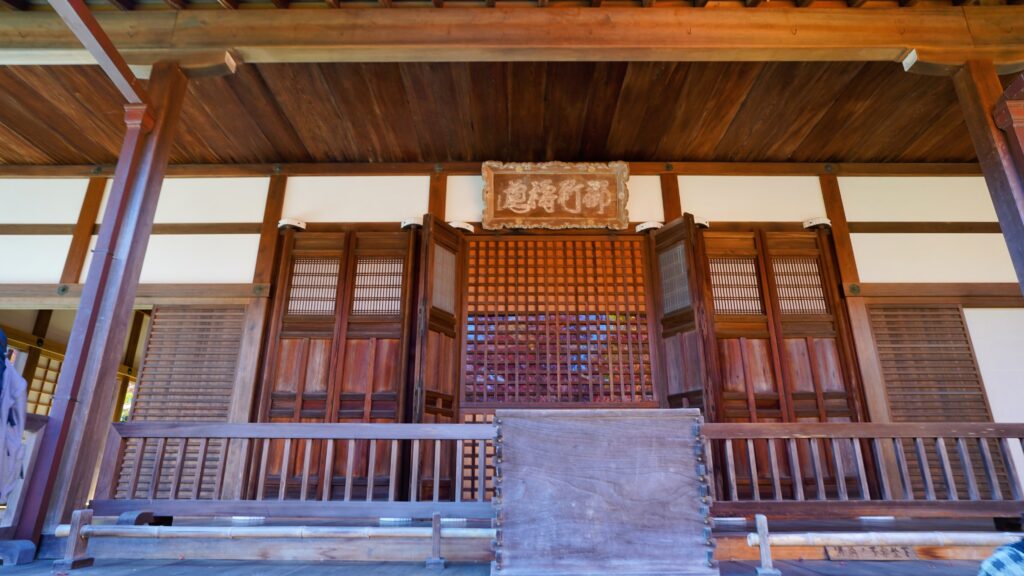
Originally, the Main Hall was the guest hall of Fushimi Momoyama Castle, which belonged to the powerful 16th-century ruler, Toyotomi Hideyoshi. After the founding of Jojakkoji, the hall was relocated and reconstructed here with the help of feudal lord Kobayakawa Hideaki. The hall has a distinctive two-tiered roof with a convex upper roof (mukuri-yane) and a concave lower roof (sori-yane). Entry into the hall is not permitted.
Niomon (Deva Gate)
This gate once served as the south gate for the guest hall at Honkokuji, the head temple of the Nichiren Buddhist sect. Built between 1345 and 1349, it was moved to Jojakkoji in 1616, making it the oldest structure on the temple grounds. The path leading up to the gate becomes a stunning “tunnel of autumn leaves” in the fall.
Tahoto (Pagoda)
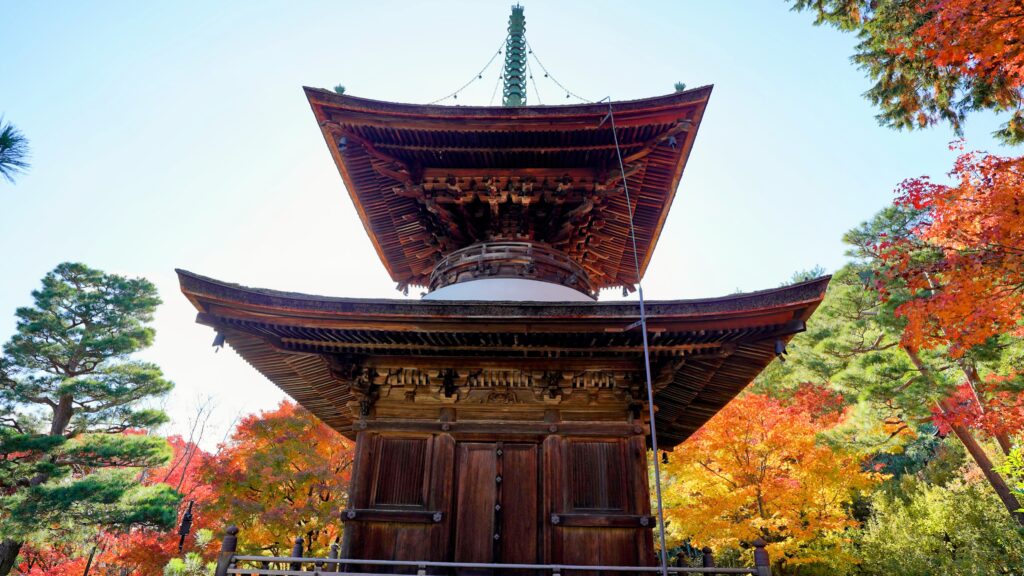
This 12-meter-tall pagoda, constructed in 1620, is the primary symbol of Jojakko-ji and is designated a National Important Cultural Property. It is a beloved, iconic structure often featured in books and photographs of Kyoto. After it was built, it received an imperial tablet with the name “Heisonkaku” from retired Emperor Reigen. The area around the pagoda is particularly picturesque during the autumn foliage season.
Shoro (Bell Tower)
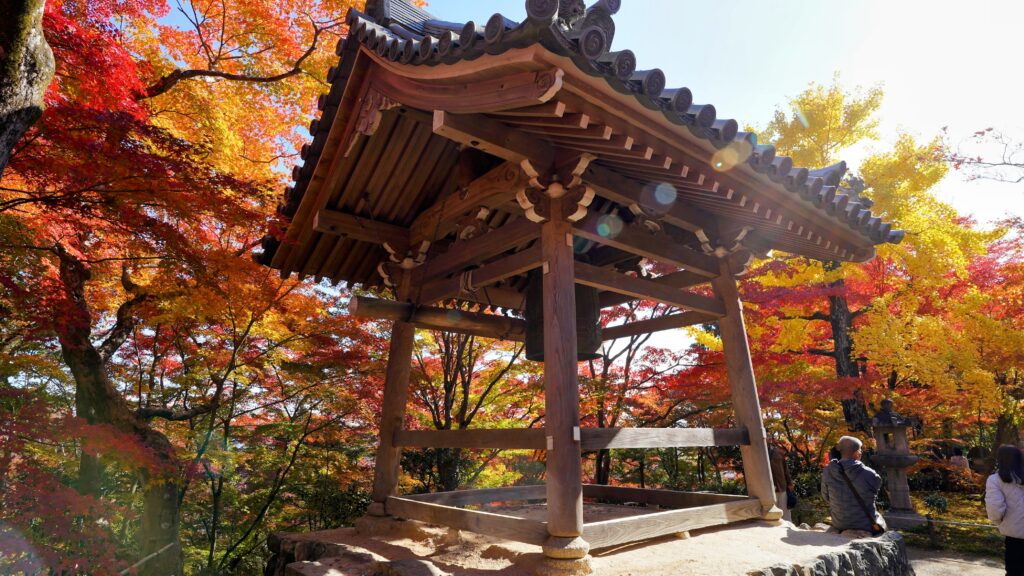
Located in front of the main hall, the bell tower was built in 1641 by the temple’s fourth head priest, Nissen Shonin. The original bell was confiscated and melted down for the war effort during World War II. The current bell was cast in 1973.
Myokendo (Myoken Hall)
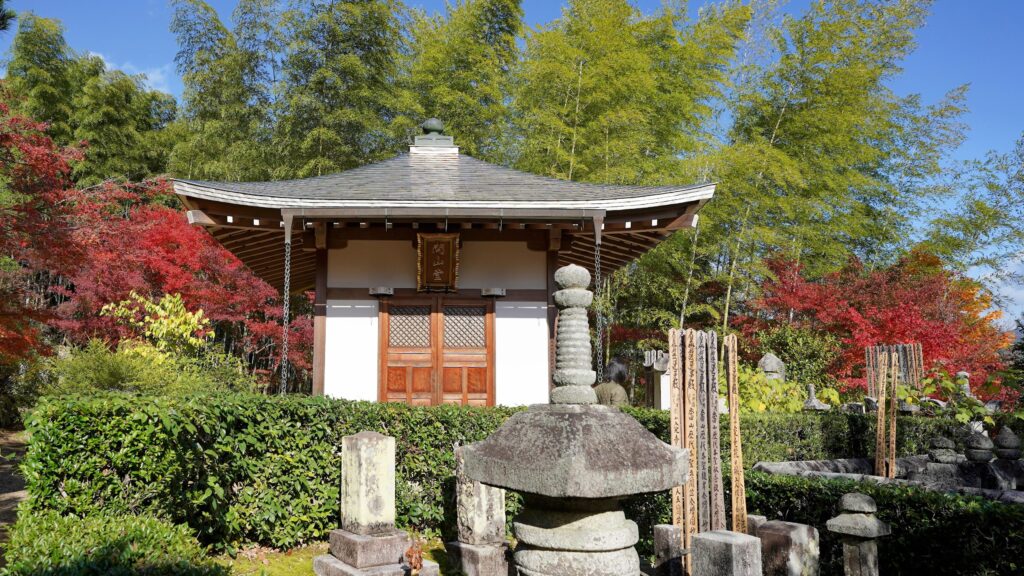
Situated to the left of the Main Hall, this hall enshrines a statue of the Myoken Bodhisattva. According to legend, the statue floated down the Hozugawa River during a flood in the Keicho era (1596–1610). A boatman found it and later enshrined it here.
Kasen-shi (Poets’ Shrine)
Located just beyond the Tahoto Pagoda, this small shrine is dedicated to two master poets. It enshrines statues of Fujiwara no Teika, compiler of the renowned Ogura Hyakunin Isshu poetry anthology, and Fujiwara no Ietaka, a renowned poet and compiler of the Shin Kokin Wakashu. The shrine’s plaque was calligraphed by the renowned artist Tomioka Tessai.
Visiting Information
Open Hours and Admission Fee
Hours: 9:00 a.m. – 5:00 p.m.(Last admission is at 4:30 p.m.)
Admission fee: 500 JPY
Closing Days: Open year-round.
Reservations: Not required for general admission.
Night Viewing: Night openings and light-up events are not currently held.
Special viewing: A special viewing of the interior of the Main Hall and Study may be held during the autumn foliage season (mid- to late November) for an additional fee.
Access Information
Address: 3 Saga-Ogurayama, Oguracho, Ukyo-ku, Kyoto 616-8397
By Train:
- JR Sagano Line, Saga-Arashiyama Station: Approx. 15-minute walk
- Sagano Romantic Train: Torokko Arashiyama Station Approximately a 3-minute walk.
- Keifuku (Randen) Line, Arashiyama Station: Approximately 20-minute walk
- Hankyu Line Arashiyama Station: Approximately 30-minute walk
By bus:
- The nearest bus stop is “Saga Shogakko-mae,” which is an approximate 10-minute walk from the stop.
- From Kyoto Station: Take Kyoto City Bus #28 (approximately 49 minutes).
- Bus routes serving the stop:
- Kyoto City Bus: #11, #28, #85, #93
- Kyoto Bus: #62, #72, #92, #94
By car:
- Parking: Free parking is available for five standard-sized cars.
- Note: During the autumn foliage season, the lot is reserved for taxis only. General vehicles cannot park.
- Large buses are not permitted to enter.
Visitor Guidelines
- Tripods and monopods: The use of tripods and monopods is strictly prohibited on the temple grounds. They cannot be left at the reception desk.
- Pets: Pets are only allowed if they are in a carrier or being held. They cannot walk on the grounds, even on a leash.
- Wheelchair Access: Due to the many stairs on the grounds, accessible areas are limited. Please inquire at the reception desk upon arrival.
- Goshuin (Temple Stamp): Goshuin are available at the reception desk. Only pre-written stamps on paper (kaküoki) are offered. Original goshuin-cho (stamp books) are also for sale.
